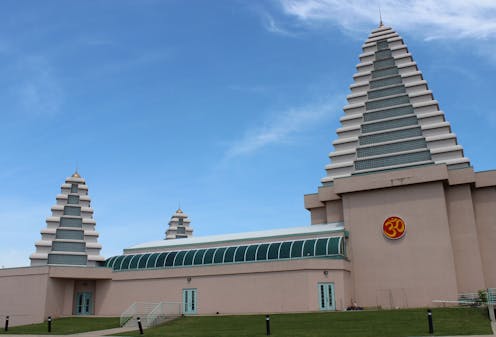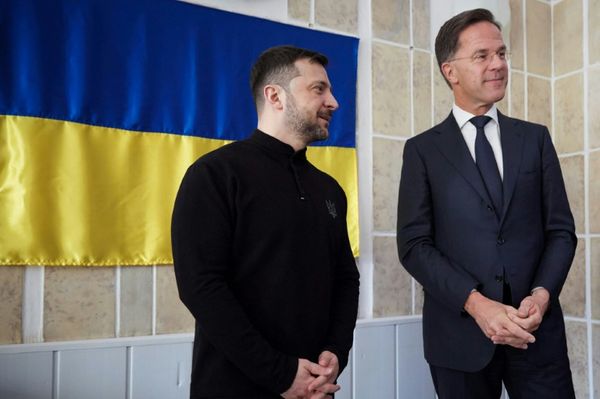
Diplomatic relations between India and Canada continue to decline in the aftermath of the slaying of a Canadian Sikh activist in British Columbia. A recent violent confrontation at a Hindu temple in Brampton, Ont. between pro-Khalistan protesters and Hindu nationalists has created further tensions.
Dozens of pro-Khalistan Sikhs, many of them members of Sikhs for Justice, gathered outside the Brampton temple to protest the presence of Indian consulate officials in one of several recent demonstrations in the Toronto area.
The protesters support the Khalistan movement that seeks to create a homeland for Sikhs in northern India. The movement is banned in India but permitted in Canada.
Several Canadian media outlets reported on the Brampton clash, but most did not highlight the role of far-right Hindu nationalists and the use of a controversial slogan chanted at the temple.
In videos circulating on social media, the priest at the Hindu Sabha Mandir temple, later identified as Rajinder Prasad, is seen addressing a large crowd.
He shouts in Hindi: “Batenge toh…,” and the crowd shouts back, “Katenge!”
What it means
The controversial phrase batenge toh katenge can be loosely translated to “if we are divided, we will be destroyed” or “divided we fall.” But this apparent call for Hindu unity has an ominous meaning that upholds Hindu nationalist principles and is at odds with democratic norms.
The slogan is directly linked to Uttar Pradesh Chief Minister Yogi Adityanath’s speech at a rally in August this year in Agra in the state of Uttar Pradesh in India.
Adityanath, a politician and monk known for his extremist conservative views, remarked that “the nation will be empowered only when we are united.” Several members of both the ruling Bharatiya Janata Party (BJP) and its Hindu nationalist parent organization, Rashtriya Swayam Sevaka Sangha, have taken up the catchy slogan.
Indian Prime Minister Narendra Modi leveraged Yogi’s speech in another rally, saying, “Batenge toh baatne wale mehfil sajayenge” — “if we divide, the people who divide us will make merry.”
Similarly, in Bihar in October, Union Minister Giriraj Singh called the audience with “batenge” and heard the response from the crowd: “katenge.” He continued:
“You are yourself saying we will be butchered if we don’t unite. So, all of you keep swords and trishuls at home. Lord Shiva keeps trishul in his hand and goddess Durga keeps a sword in her hand. You too worship these weapons and defend yourselves from the attackers.”
In Singh’s speech, batenge toh katenge takes up a form of Hindu militancy where gods and their mythological forms and weapons are invoked for potential violence.
Temples in Hindu nationalist politics
Mythopolitics has played an important role in the rise of Indian Hindu nationalism, which has stoked fear around the notion of the vulnerability of temples to attacks by “outsiders.”
One of the longest legal and political battles in post-colonial India involved the dispute over the 16th century Babri mosque in Ayodhya. Insisting that a Hindu temple existed at the site prior to the Babri mosque, Hindu nationalist groups demolished the mosque in 1992.
The promise of building a temple in the place of the demolished mosque played a key role in right-wing election campaigns and victories at the time. Discourse around the protection of temples has since been central to the rise of Hindu nationalism in contemporary times.
Rhetoric of Hindu unity
As the Hindu crowd gathered recently at the Brampton temple and repeatedly chanted batenge toh katenge at the priest’s prompting, it was clear that the Indian diaspora is familiar with the slogan.
The phrase taps into an exaggerated history of attacks on temples that has been carefully structured and mobilized. Prasad, the Brampton priest, was suspended from his duties, though reinstated within days after temple-goers sharply criticized temple management on social media.
A lot rides on the Hindu nationalist discourse of Hindu unity. In Essentials of Hindutva, Vinayak D.Savarkar, who is heralded as the father of Hindu nationalism, writes:
“Some of us were Aryans and some Anaryans; but Ayars and Nayars — we were all Hindus and own a common blood. Some of us are Brahmans and some Namashudras or Panchamas; but Brahmans or Chandalas — we are all Hindus and own a common blood. Some of us are Daxinatyas and some Gauds; but Gauds or Saraswatas — we are all Hindus and own a common blood. Some of us were Rakhasas and some Yakshas; but Rakshasas or Yakshas — we are all Hindus and own a common blood.”
He lists caste differences and the racialization of the different peoples of the Indian subcontinent to make a case for Hindu unity.
Hindu nationalist forces have in fact attempted to systemically obscure conversations around caste to create the illusion of Hindu unity. But this supposed Hindu unity is ultimately aimed at strengthening divisions along religious lines and creating a binary of Hindus and non-Hindus.
Hindu nationalism in the West
The Hindu nationalist movement has been adept at using a language of liberalism and multiculturalism to build and promote its politics in the West. Much political manoeuvring happens in the guise of tradition and heritage.
For instance, Vishwa Hindu Parishad of America, one of the earliest Hindu nationalist organizations in the United States, claims to be promoting Hinduism and pursuing cultural activities rather than political mobilizations.
The Canadian Hindu Association lists its objectives as creating “awareness in the young generations about Hindu traditions … . Promote Hindi language, culture, traditions and literature in the society.”
Read more: Alleged assassination plots in the U.S. and Canada signal a more assertive Indian foreign policy
Nonetheless, the association’s leaders have a long history of invoking violence. Ron Banerjee, director of the non-profit Hindu Conference of Canada, was at the Brampton temple on the day of the conflict and was arrested and charged with inciting hatred.
The phrase batenge toh katenge is a pro-violence dog whistle, not a call for unity, and therefore needs to be understood in terms of how rabid Hindu nationalism is covered and investigated in Canada.
Sheetala Bhat does not work for, consult, own shares in or receive funding from any company or organisation that would benefit from this article, and has disclosed no relevant affiliations beyond their academic appointment.
This article was originally published on The Conversation. Read the original article.







